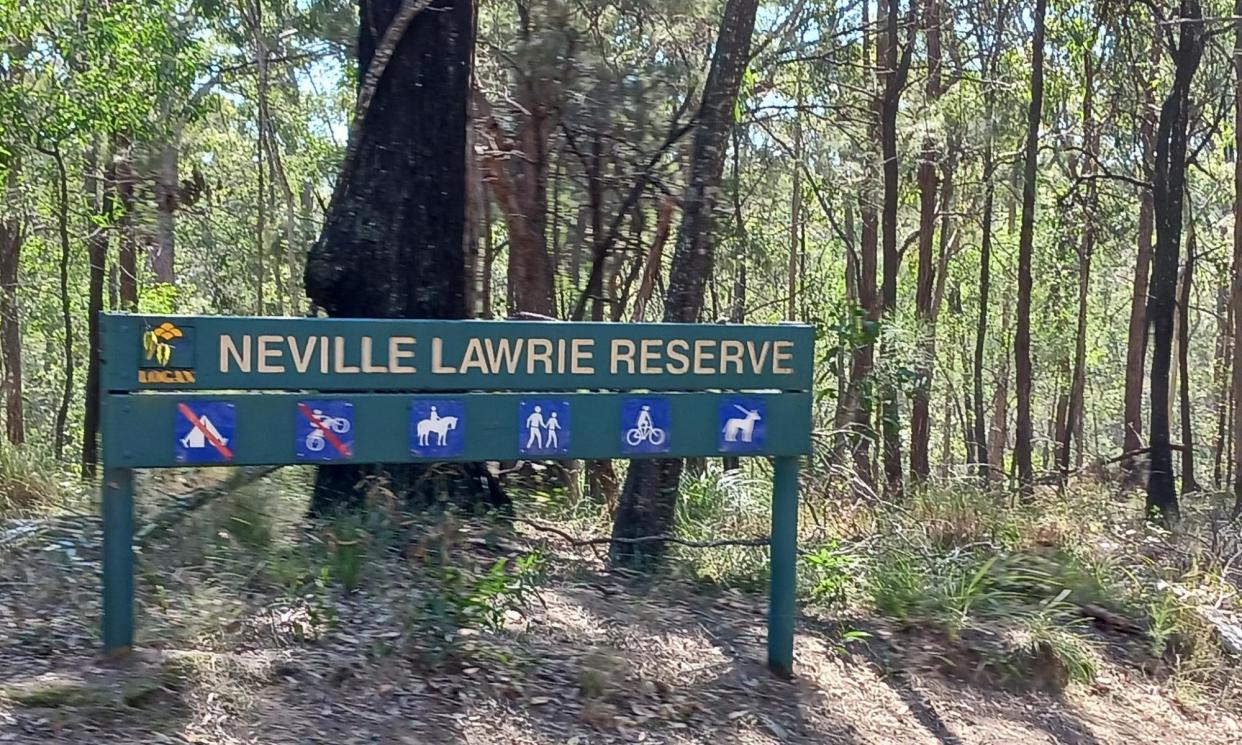Fear for koalas after bushwalker finds fire ant nests near Queensland sanctuary

Fire ants have reached protected koala habitat and a koala priority area in south-eastern Queensland, with experts warning of the danger the highly invasive pest poses to native wildlife.
At least five red imported fire ant (Rifa) nests were discovered in Neville Lawrie reserve at Logan, which is part of the Daisy Hill koala bushlands, at the end of August.
The dense bushland is known for its prime koala habitat and koala corridor. Less than 2km from the location of the nests is the Daisy Hill koala sanctuary and the area is popular with families, mountain bikers, horse riders and bushwalkers.
Nikki Liddell, 53, a finance manager from Alberton, discovered the nests when bushwalking.
“I never thought fire ants would have been in that area – I found them in the middle of the forest,” she said. “How in the hell did they get into this area?”
According to the national fire ant eradication program’s map of fire ant detections, no Rifa have been detected within the Daisy Hill conservation park or the Neville Lawrie reserve in the last 12 months.
Koalas are particularly susceptible to fire ants because they move over ground and have thick fur. They were first identified as a species at threat from fire ants in a 2013 review, with the marsupials comprising one of 123 native species threatened by Rifa, Reece Pianta from the Invasive Species Council said.
In February koalas were for the first time identified at the federal level as being particularly vulnerable to the fire ants. In a submission by the federal Department of Climate Change, Energy, the Environment and Water to the Senate inquiry into Rifa, the government warned koala, platypus and echidnas could be killed or injured by them.
Rifa were first detected in Queensland in 2001 and can kill people, native animals and livestock as well as damage infrastructure and ecosystems, and have infested more than 700,000 hectares in the Brisbane area.
A queen ant could easily fly at least 2km to start a new nest, Pianta said, and the koala sanctuary is well within reach of the nests Liddell discovered. A possible Rifa detection inside the sanctuary was reported at the end of August but was later determined to be a coconut ant, according to the program.
Liddell reported the nests to the fire ant suppression taskforce, which works alongside the program, but took the matter into her own hands when she had not received a response within a week.
“I got a bit cranky and said I’d [bait them] myself. I couldn’t live with myself if they didn’t treat it for a month,” she said from her Gold Coast home. “They need to be treated straight away so they don’t spread more.”
She returned to the area a week later and treated a total of five nests with bait provided by the taskforce for use on her rural acreage. She is experienced with fire ants and is treating about 70 nests on her property.
Pianta said he found it encouraging the community wanted to help solve the problem.
“The community are stepping up because they can see that this is an emergency,” he said. “This is an iconic location that was set up to keep koalas safe.”
The purpose of the suppression zone was to keep fire ants under control, he said, and Liddell’s experience suggested “suppression needs to be ramped up significantly so that it works”.
“Places that are supposed to be sanctuaries for threatened species will not be safe from fire ants unless we get them under control.”
Related: What are fire ants, and what will happen if these tiny killers take hold across Australia?
Both he and Liddell are calling for an extension of suppression efforts – including new self-baiting protocols – in the area, which will not be covered by the taskforce or the eradication program for two years from 2026.
“For places like Daisy Hill, there is a two-year gap between the end of the suppression program and when eradication treatment will commence there,” he said. “We need to make sure self-baiting kits are still available over the next four years.”
A spokesperson from the program said Liddell’s report had been referred to Logan city council for treatment and a decision on future funding of the taskforce had not been made.
Under Queensland’s Biosecurity Act and pest management regulations, only authorised officers or approved persons were permitted to treat fire ants on public land, they said.
“We do strongly encourage reporting any sightings of fire ants at a residence or on public land within 24 hours. Priority is given to reports in high-risk areas such as schools, childcare centres, parks and sports fields.”


